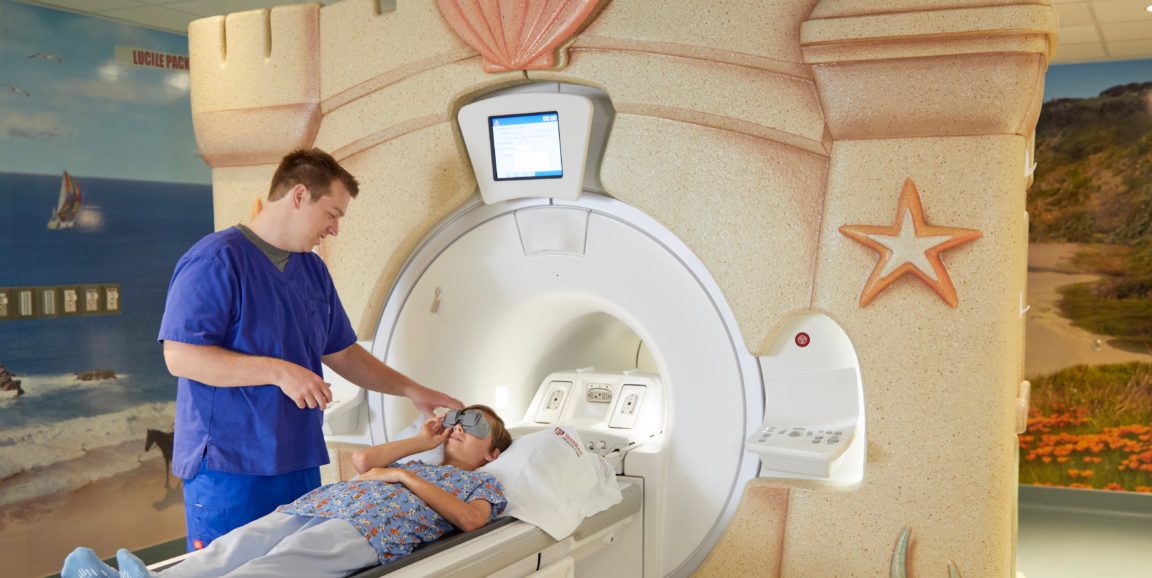MRI scans are often the best way for doctors to look inside the body, especially if they need images of soft tissues such as muscle. But children who would benefit from MRIs don't always receive them, pediatric radiologist Shreyas Vasanawala, MD, PhD, explained in a recent story I wrote.
The problem? Most MRI equipment is designed for adult-sized bodies and relies on adults' ability to hold still for long periods of time. Wiggly little patients can receive anesthesia to facilitate MRIs, but that introduces risks into an otherwise non-invasive exam.
So, for the last 10 years, Vasanawala and his colleagues have been working to design technical solutions that make MRI equipment fit kids instead of the other way around. They've been improving the computer software that processes MRI signals to allow the computer to get better images from much less data. And they've also been building devices sized for children's bodies. A key change has been redesigning the coils — bulky metal receivers that fit over a particular body part — that are used to pick up radio-frequency signals generated during the exam, as Vasanawala explained:
We’ve been collaborating with engineers from UC Berkeley to create new designs and production methods for highly flexible and lightweight MRI signal-receiving coils tailored to children’s bodies. Standard coils are larger than children need, making them unnecessarily heavy and uncomfortable. Larger-than-necessary coils also pick up extra noise or interference, reducing the image quality. Child-size receiver coils increase image clarity and lower scan times.
These improvements mean faster exams and much less use of anesthesia. The innovations aren't just good for children; adults can benefit, too:
Sometimes you can see a lesion on an MRI that you want to biopsy but can’t reach when the area is covered with a big, bulky coil. With the lower-profile equipment, we’ll be able to biopsy through holes in the coil. Also, a light flexible coil is just more comfortable for everyone.
And not every adult is a thin, 6-foot male. The new equipment will help us meet more patients’ needs. For instance, for breast MRI, it’s very helpful to have a form-fitting coil that sits close to the lesions we’re trying to image.
To make the process of receiving an MRI less intimidating, the imaging center at the new Lucile Packard Children's Hospital Stanford, which opened in December, incorporates lots of low-tech kid-friendliness. The photo above shows an MRI machine decorated like a sand castle, in an exam room with wall murals showing California beach scenes.
Photo courtesy of Lucile Packard Children's Hospital Stanford




